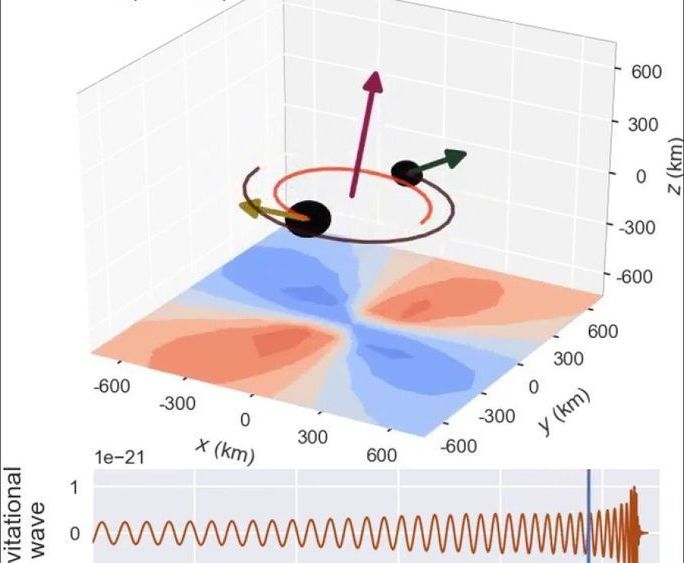Shoot a rifle, and the recoil might knock you backward. Merge two black holes in a binary system, and the loss of momentum gives a similar recoil—a “kick”—to the merged black hole.
“For some binaries, the kick can reach up to 5000 kilometers a second, which is larger than the escape velocity of most galaxies,” said Vijay Varma, an astrophysicist at the California Institute of Technology and an incoming inaugural Klarman Fellow at Cornell University’s College of Arts & Sciences.
Varma and his fellow researchers have developed a new method using gravitational wave measurements to predict when a final black hole will remain in its host galaxy and when it will be ejected. Such measurements could provide a crucial missing piece of the puzzle behind the origin of heavy black holes, said Varma, as well as offer insights into galaxy evolution and tests of general relativity. He is lead author of “Extracting the Gravitational Recoil from Black Hole Merger Signals,” published March 13 in Physical Review Letters and co-authored with Maximiliano Isi and Sylvia Biscoveanu of the Massachusetts Institute of Technology.
